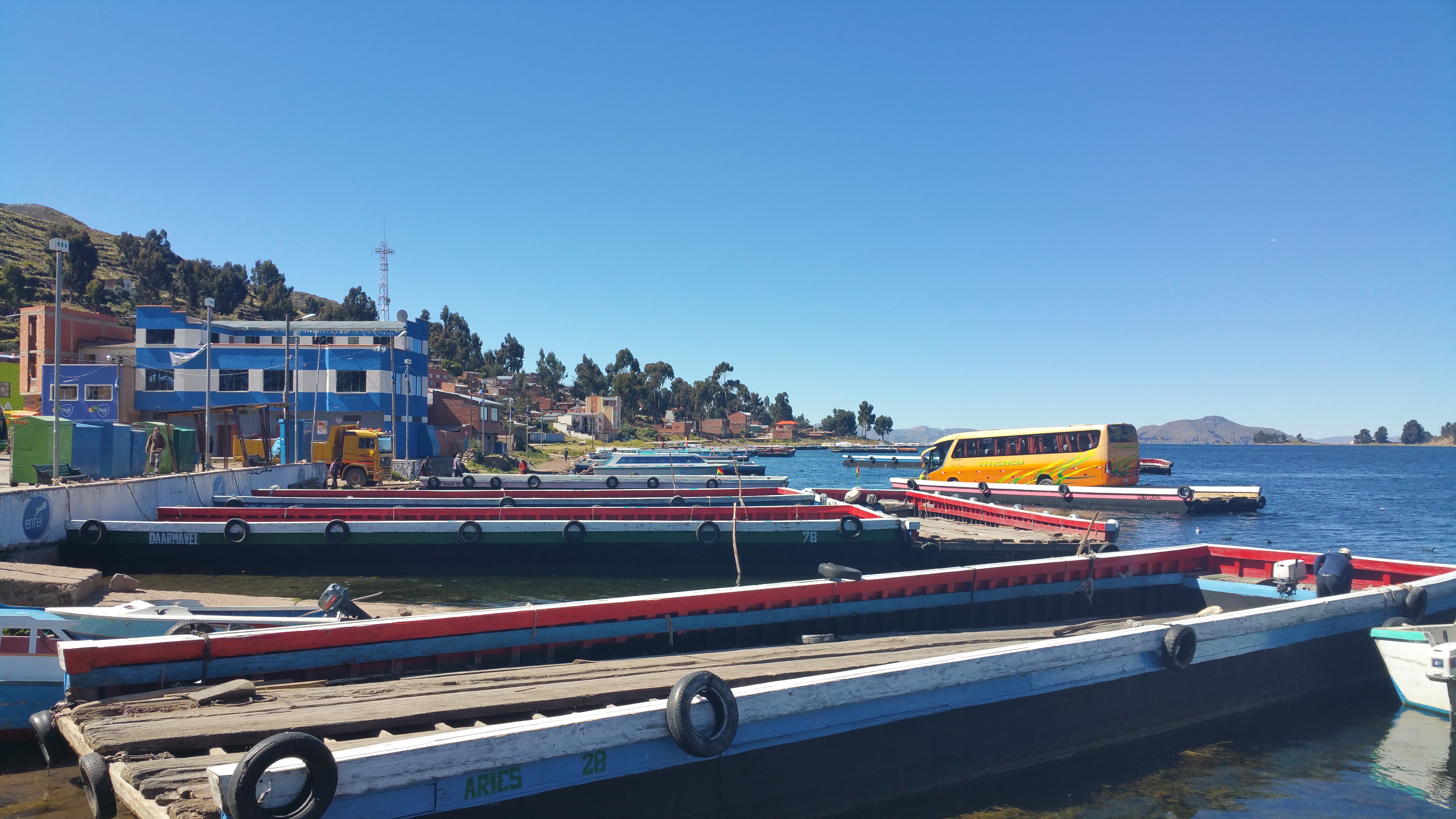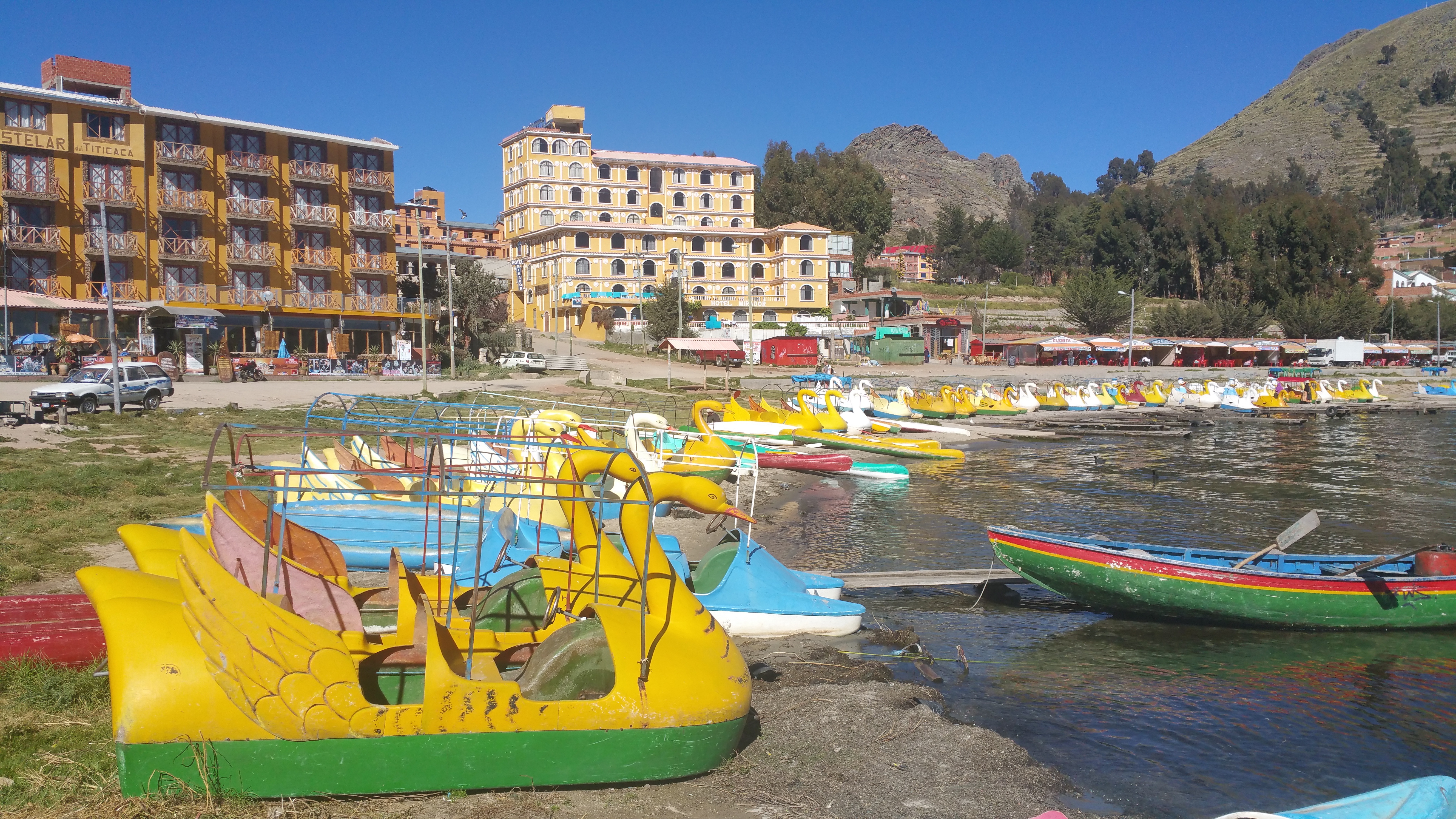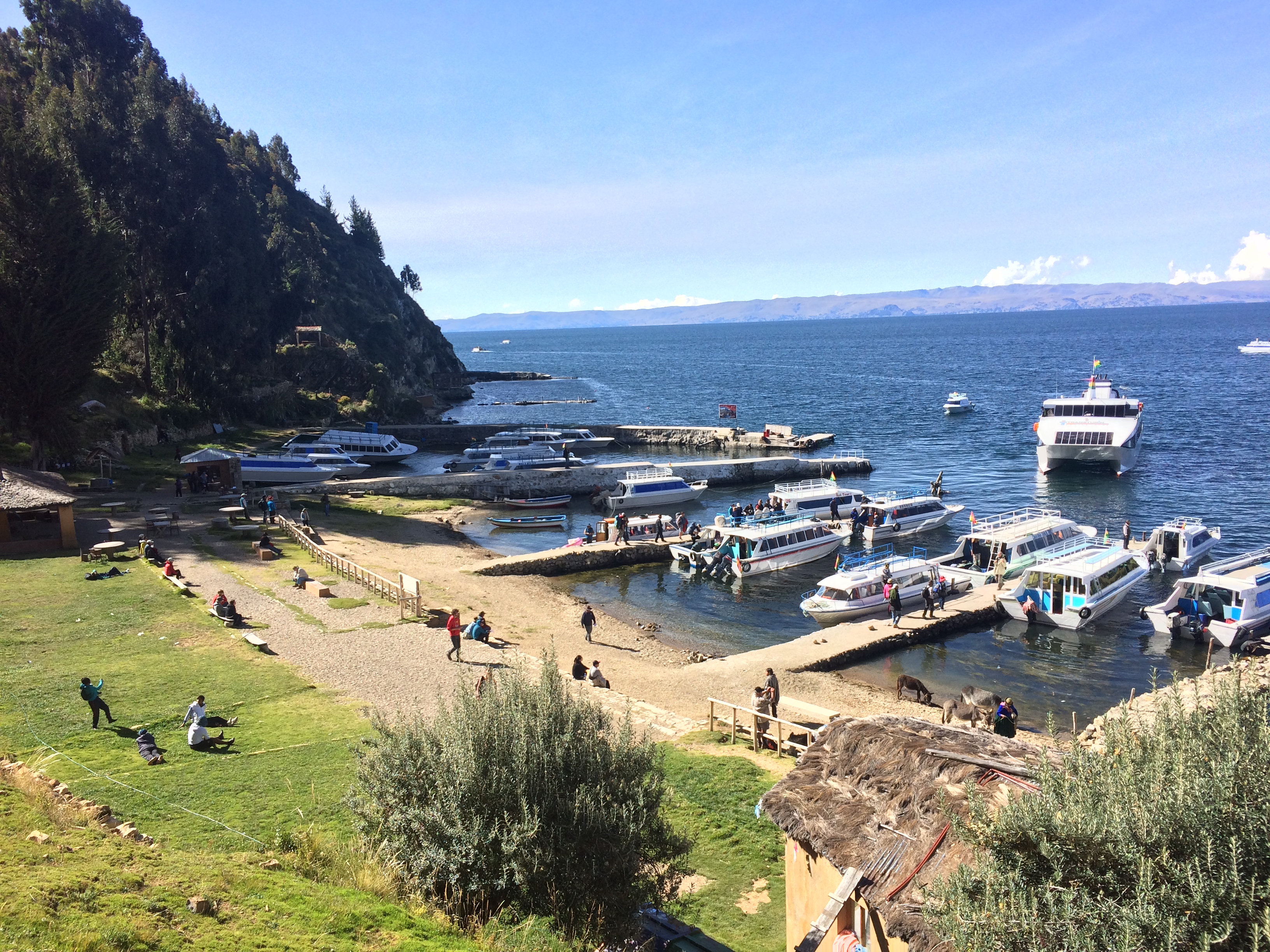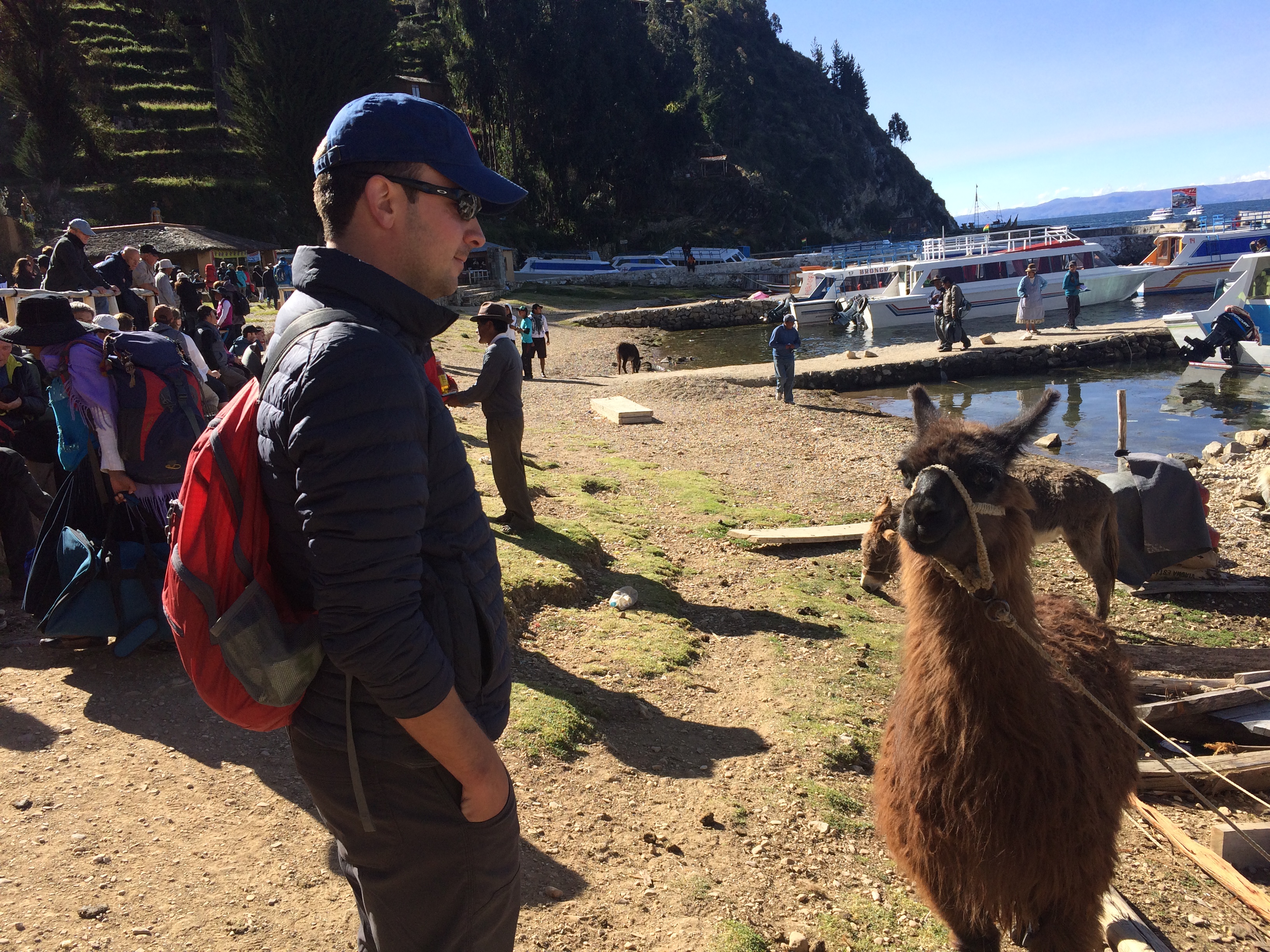I write this after having visited Lake Titicaca on both Bolivian and Peruvian sides. Whereas the Peruvian side stirs the fascination for indigenous culture, the Bolivian side captivates the eyes with its picturesque scenery. Lake Titicaca is a popular resort town for both locals and internationals, and getting there from La Paz couldn’t be easier.
At ~3,800 meters in elevation, Lake Titicaca is dubbed as “the highest navigable lake in the world”…whatever that means. We had just hiked around Lake Chungara, Chile at 4,500 meters. There were no boats at Lake Chungara, but that didn’t mean you couldn’t bring a small boat and navigate across it. =P
Although locals pay only 10 bobs (~$1.50) for the 4-hour bus ride from La Paz to Copacabana, tourists typically pay 30-40 bobs. Luckily we managed to find tickets for 20 bobs (~$3) at the main bus terminal the day before departure. The bus travels all the way to the Strait of Tiquina, where the massive lake splits into two. In order for the bus to cross the strait, passengers are required to disembark the bus, cross via ferry, and wait for the bus to cross via barge.
The little ferry, for 2 bobs (~30¢):
Not long after we reunited with the bus, we continued our way up the windy road to Copacabana. We were all dropped off at the main bus terminal and we spent the rest of the afternoon exploring the town and finding lodging and boat tickets for Isla del Sol for the following morning.
For sunset we walked up the steep Cerro Calvario for its famous overlook of Copacabana. I think Lonely Planet estimates the walk to take 45 minutes, whereas other reviewers claim 30 minutes. We are out of shape and did it in approximately 15 minutes, even with the high elevation. Woot, woot! 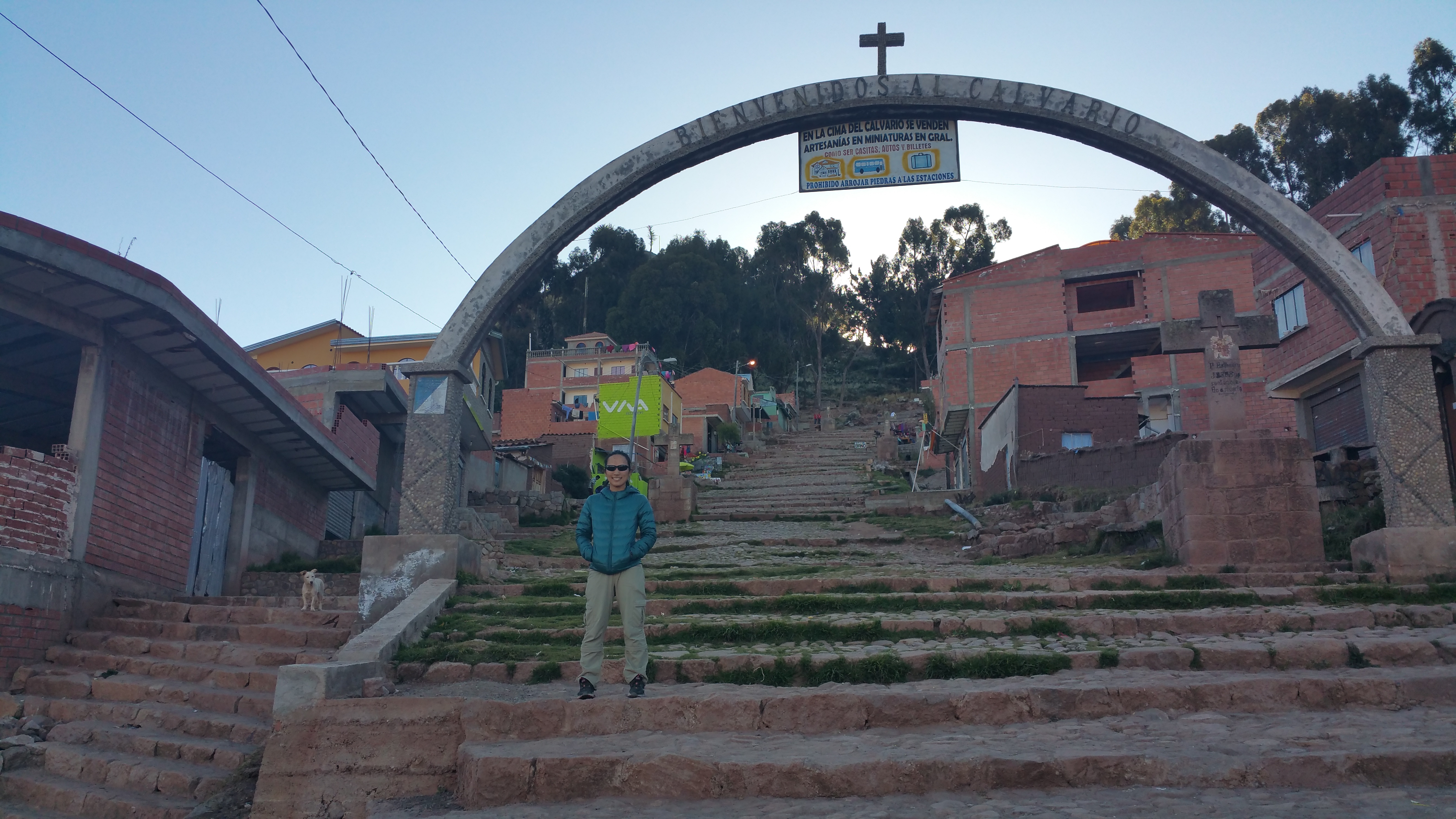
And here is Copacabana below. You can even see Peru in the distance!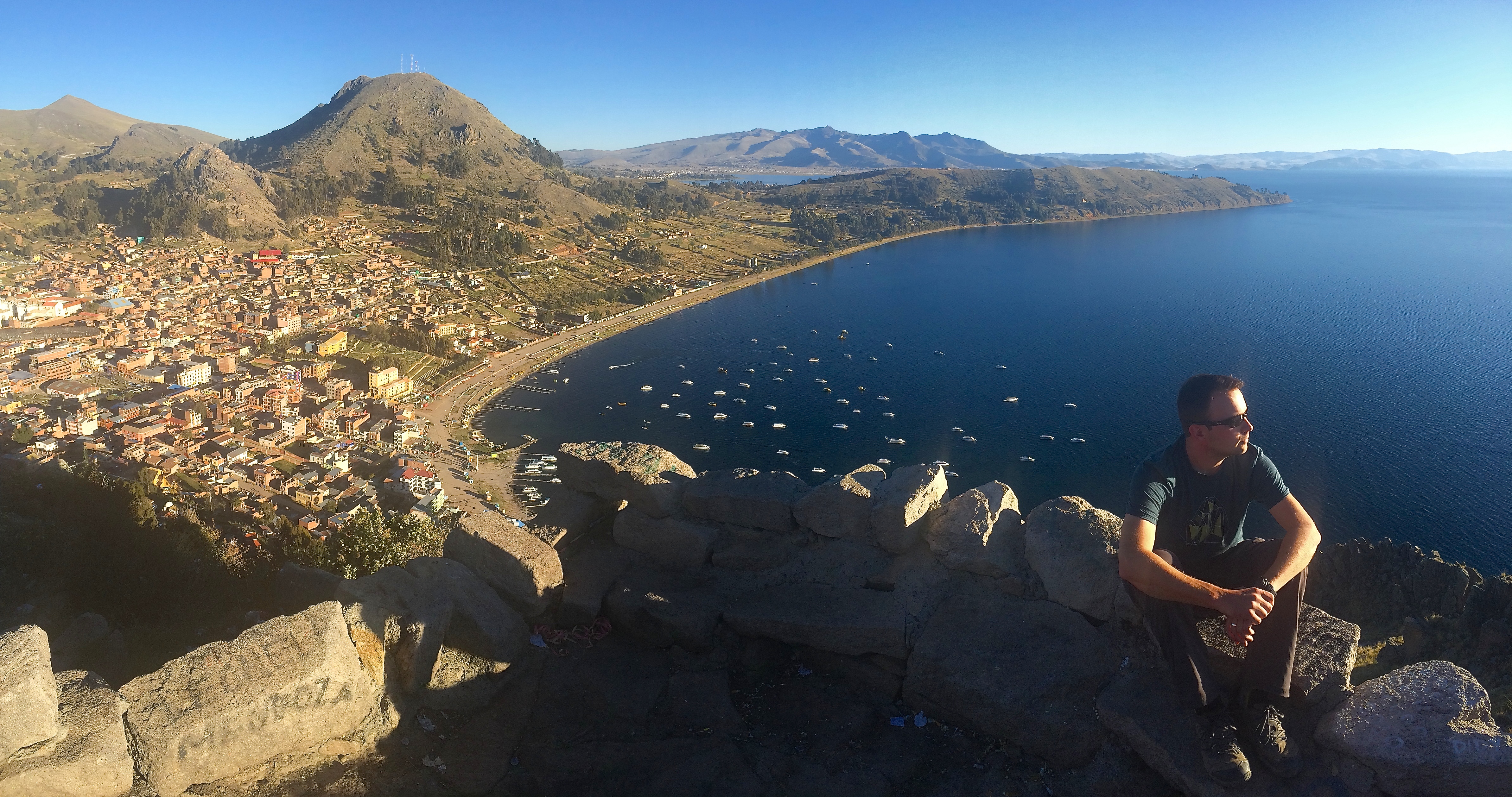
We sat at the lookout for about an hour, until the magic hour.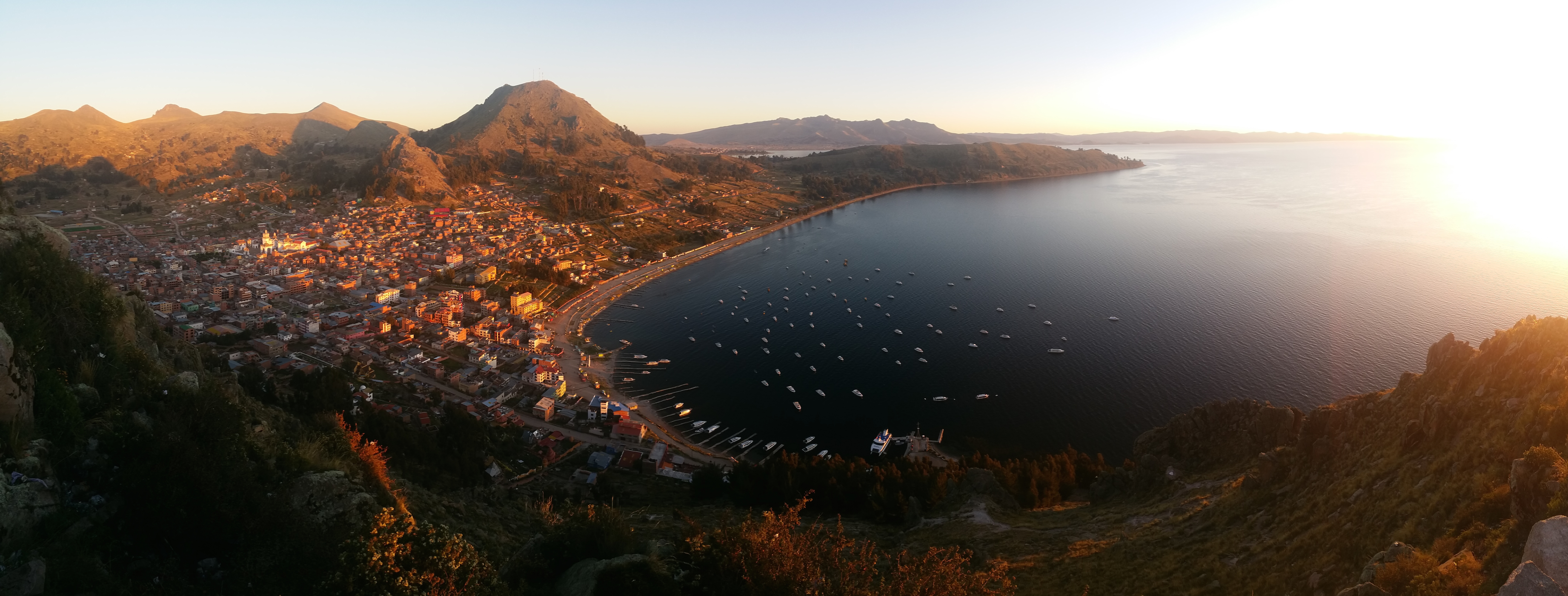
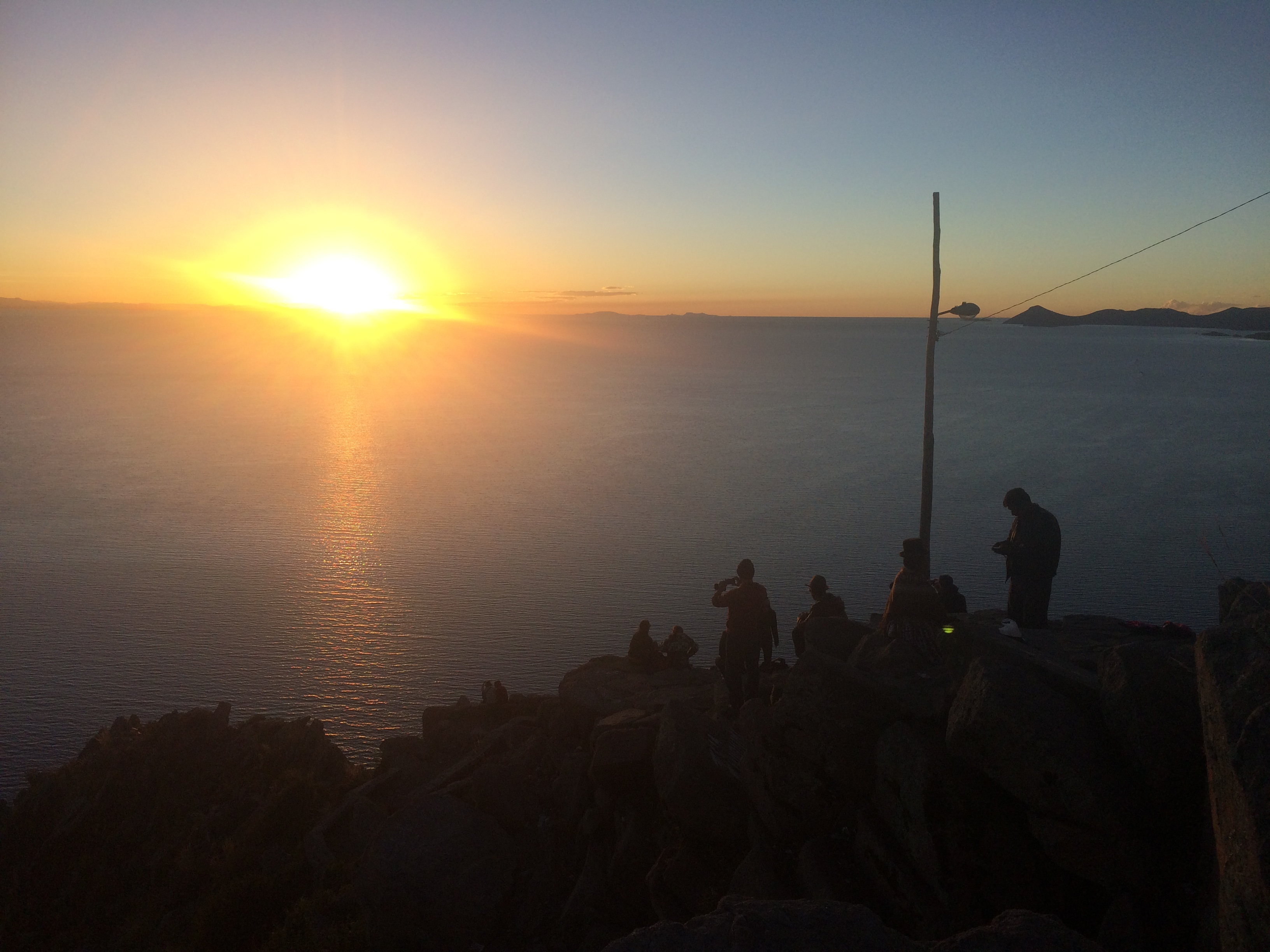
Even the main tourist strip in town is pleasant at sunset.
The next morning we took the incredibly slow boat/ferry (30 bobs or ~$4.30) to the north shore of Isla del Sol, the largest island on Lake Titicaca. Though some hostels and campsites are scattered on the north shore, most hostels, restaurants, mini markets, and homes can be found on the southern shore of the island. For those who choose not to spend the night on Isla del Sol, the most common activity is to hike from the north to the south to catch the afternoon ferry back to Copacabana. That is what we did. If you hike the entire route, you will need to pay three different tourist fees simply for trail usage: 10, 15, and 5 bobs, a total of another 30 bobs (~$4.30).
The placid waters upon arrival of Isla del Sol:
There are no flat paths on Isla del Sol. The entire island consists of steep rolling hills, which offers splendid views of and around the island.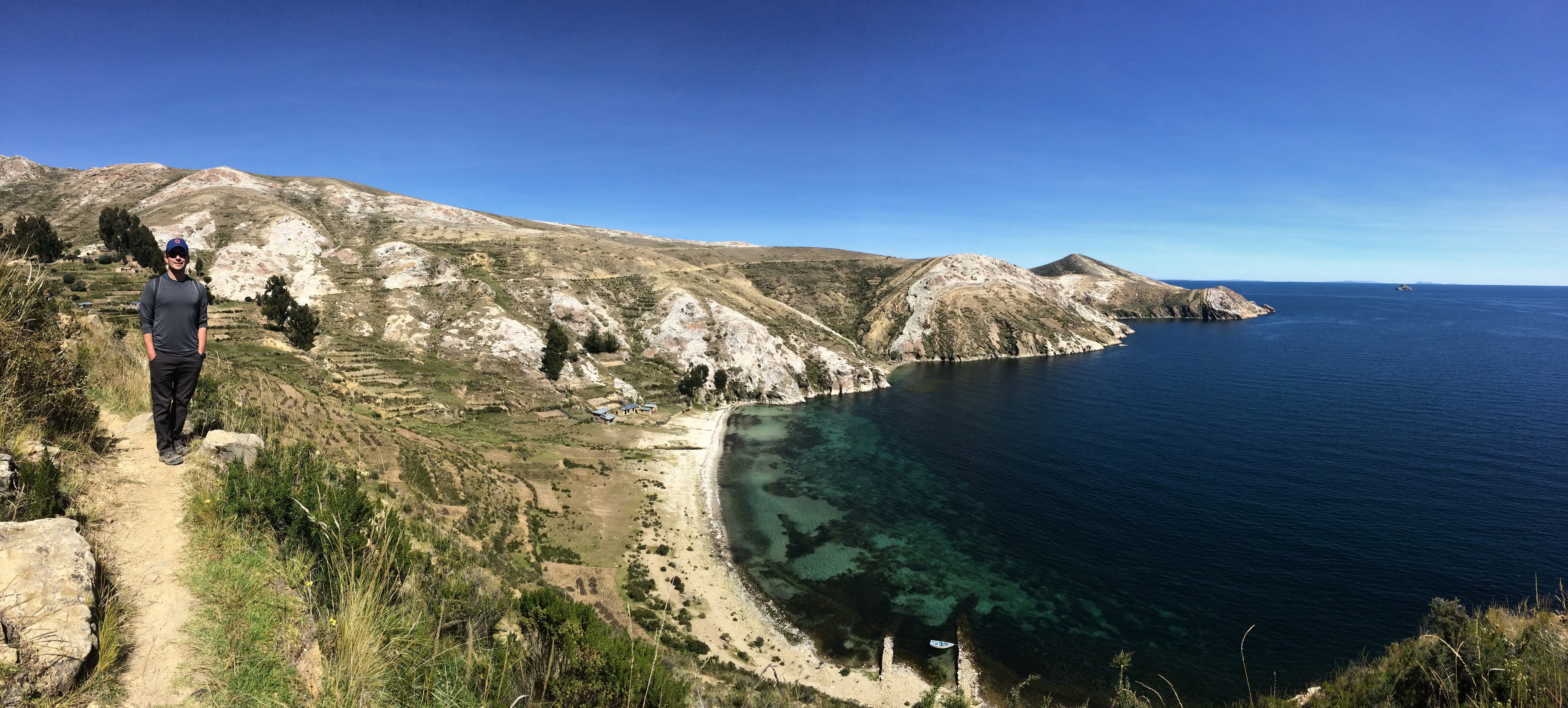
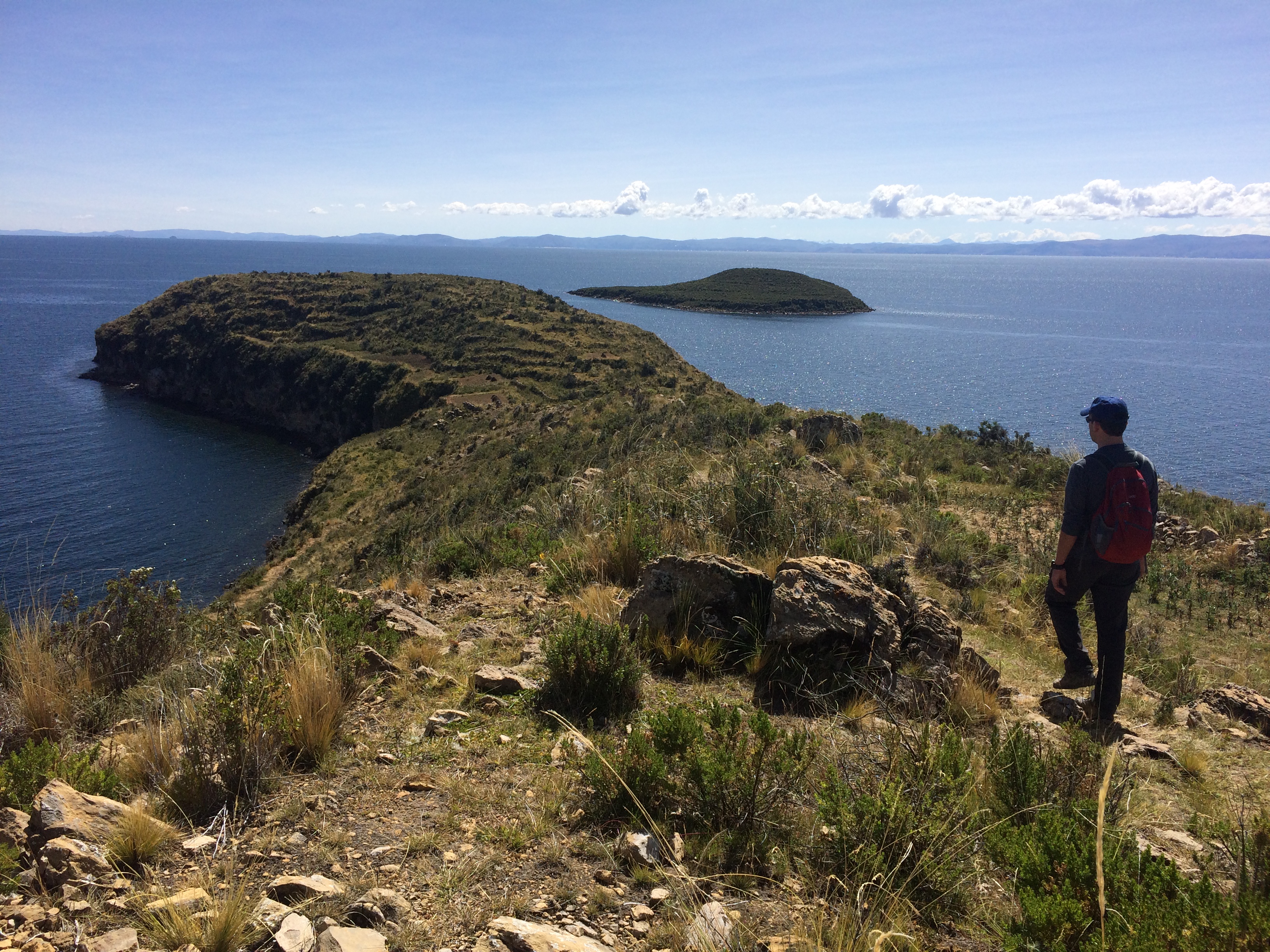
There are plenty of homes, farmland, and domesticated sheep and alpaca along the path. Here is a thatched-roof house with views of the lake in the distance: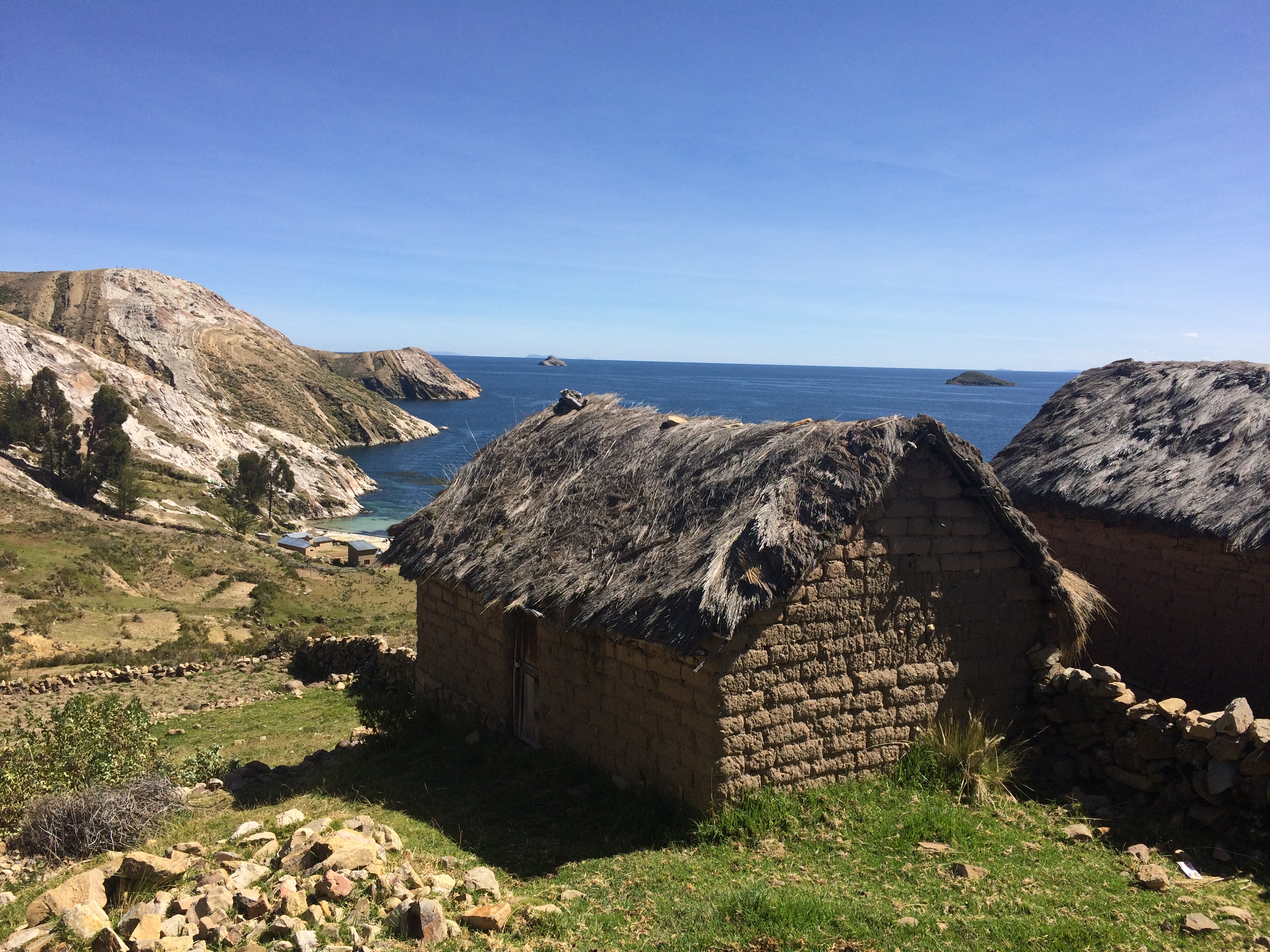
And we finished our hike on Isla del Sol with a super close encounter with a llama. He didn’t like how close I got so he spit on me as I took this photo.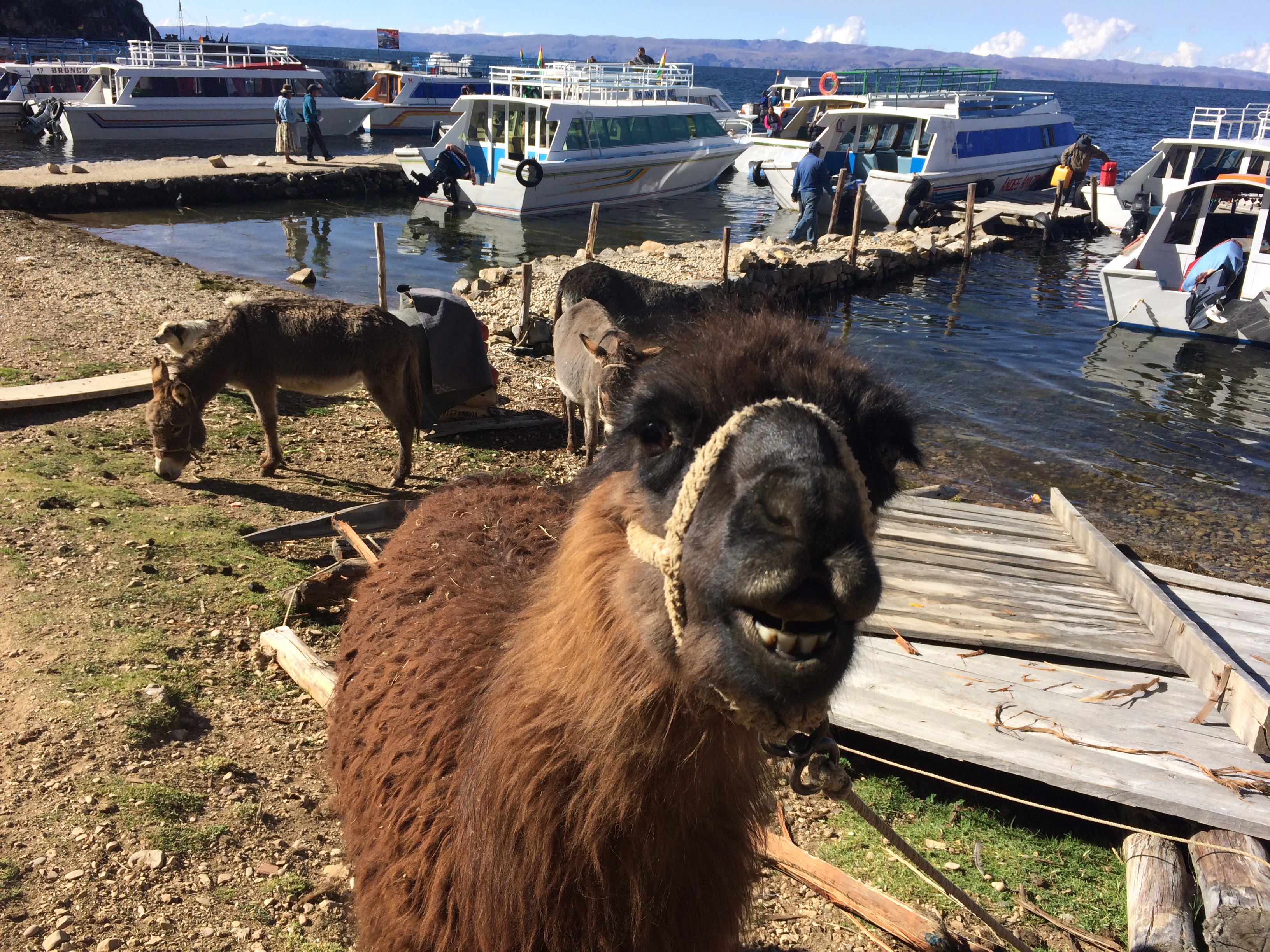
After a brief 2.5 days at Lake Titicaca on the Bolivian side, we bid farewell to Bolivia and headed for Lake Titicaca on the Peruvian side. Although our time in Bolivia was brief, we actually saw most of Bolivia’s highlights in only a week and a half: Uyuni, La Paz, Coroico (Yungas Road), and Copacabana. All places were at high altitude and cold! Despite the short visit and the pain-in-the-ass visa process that we endured, we loved the landscapes and cityscapes the seldom-visited South American country had to offer.

